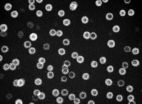(Press-News.org) MADISON – Hunters have been credited with being strong conservation advocates for numerous game species in multiple countries. Would initiating a wolf hunt invoke the same advocacy for the carnivores?
It's a pressing question as gray wolves were removed from the federal endangered species list in some western states this past May and are poised for delisting in 2012 in Wisconsin, Minnesota, Michigan and other areas of the Midwest. But newly released public opinion surveys conducted in Wisconsin and the northern Rockies suggest that wolves are in a class by themselves and that existing deer, elk, and other game hunts are poor models for a potential wolf hunt.
University of Wisconsin-Madison researchers Adrian Treves and Kerry Martin surveyed 2,320 residents of Wisconsin, Idaho, Montana, and Wyoming – including both hunters and non-hunters – between 2001 and 2007. Their findings, appearing in the August issue of the peer-reviewed journal Society and Natural Resources, reveal hunter attitudes toward wolves that are largely inconsistent with stewardship.
Questions assessed a range of factors including acceptance of management policy, tolerance of the carnivores, willingness to kill a wolf illegally, adherence to hunt regulations, and expected financial support of conservation.
"Hunters were some of the least tolerant of wolves among our respondents, and the closer you got to wolf range the less tolerant they were," says Treves, a professor in the UW-Madison Nelson Institute for Environmental Studies.
One issue may be that hunters often view wolves as competition for deer and other game. Opening a wolf hunt may not immediately shift that perception to viewing wolves as another game species to be conserved.
Treves was also surprised by the level of support expressed for a regulated wolf hunt among non-hunters and those living outside wolf range.
In Wisconsin, for example, he says, "You find a surprising amount of support for a public regulated harvest of wolves even in places like Madison, Fond du Lac, or Sister Bay."
But these endorsements tend to be conditional, he cautions, and the conditions vary. For example, many people support the idea of a "sustainable" hunt – though "sustainable" was undefined in this context – or hunting as a way to reduce attacks on livestock and other conflicts between wolves and humans.
"To me that says that people see hunting as a tool for enabling coexistence," Treves says.
But the evidence simply isn't there to indicate that hunting wolves would affect depredations of domestic animals. No depredation data were reported following a hunt in Idaho and Montana conducted during a window of time in 2009 when the animals were not federally protected.
And though wolves have been hunted legally in Alaska for decades, the scarcity of domestic animals and difference in landscape make it nearly impossible to draw conclusions that would apply to the lower 48.
A risk map Treves and others published in June shows that wolf attacks on livestock in Wisconsin are highly localized and attributable to a relatively small number of packs. The majority of packs do not cause problems despite living in close proximity to humans, which raises significant questions about the efficacy of a general hunt to alleviate perceived problems.
"The assumption that hunting and reducing the number of animals will reduce livestock losses would be proven false if hunters are targeting the wrong animals, such as animals in wilderness areas," he says, adding that it will be important to understand hunter motivations.
"Wolves in wilderness areas don't kill livestock, it's the wolves on the edge in agricultural areas. Do hunters want to hunt in farmland? I'm not sure."
The uncertainty of how hunting would affect wolf populations could also become a legal issue, says UW-Madison law professor Stephanie Tai, citing a precedent of legal challenges of federal delisting decisions.
"People have challenged delistings for a number of reasons, and some of those have been successful," she says. "Often, successful lawsuits bring up factors the Fish and Wildlife Service may not have considered, which could include the effect of allowing hunting."
The challenge, Treves says, is to balance human needs with the need to conserve wolves as an essential component of ecosystems. In a viewpoint piece published in the August issue of the journal BioScience, Treves and Jeremy Bruskotter, an environment and natural resources professor at The Ohio State University, present some possible scenarios for the future of wolf management in the U.S. Those scenarios include reclassifying the wolves as threatened, which would permit lethal control under certain circumstances, or enacting specific federal protections outside the Endangered Species Act, such as those currently in place for bald eagles, wild horses, and migratory birds.
They advocate geographically tailored approaches that will permit local-level control within a federal framework to strike a balance between wolves and humans. Sound long-term management can include a public regulated hunt, they say, but it will unquestionably require compromise.
"A public regulated harvest is a collaboration between hunters and the state, which requires give and take. I think the next few years in Wisconsin will reveal how well that collaboration works," says Treves.
INFORMATION:
-- Jill Sakai, (608) 262-9772, jasakai@wisc.edu
END
WASHINGTON – Social media present risks and benefits to children but parents who try to secretly monitor their kids' activities online are wasting their time, according to a presentation at the 119th Annual Convention of the American Psychological Association.
"While nobody can deny that Facebook has altered the landscape of social interaction, particularly among young people, we are just now starting to see solid psychological research demonstrating both the positives and the negatives," said Larry D. Rosen, PhD, professor of psychology at California State University, ...
WASHINGTON – People who are cyberstalked or harassed online experience higher levels of stress and trauma than people who are stalked or harassed in person, according to a presentation at the American Psychological Association's 119th Annual Convention.
"Increasingly, stalkers use modern technology to monitor and torment their victims, and one in four victims report some form of cyberstalking, such as threatening emails or instant messaging," said Elizabeth Carll, PhD, in a talk entitled, "Electronic Harassment and Cyberstalking: Intervention, Prevention and Public Policy."
Emotional ...
WASHINGTON, D.C. – The path of success for Nobel Prize laureates in the sciences isn't a straight shot from obscurity to never-ending scientific superstardom, a new study reveals.
Instead, many laureates see their Nobel-winning idea grow in acceptance from their first related scientific article to their most successful publication. But their later work related to the Nobel idea gains less acceptance, and many times is no more accepted by the scientific community than their very first efforts.
"In many cases, we found that Nobel laureates' final publication on their ...
SEATTLE, WA—The most common kind of chronically irregular heartbeat, known as atrial fibrillation, is associated with a greater risk of dementia, including Alzheimer's disease. This discovery by scientists at Group Health Research Institute and their collaborators was published online in advance of print on August 1 in the Journal of the American Geriatrics Society.
"Both atrial fibrillation and dementia increase with age," said Sascha Dublin, MD, PhD, a Group Health Research Institute assistant investigator who led the research. "Before our prospective cohort study, ...
WASHINGTON — High schools in Virginia where students reported a high rate of bullying had significantly lower scores on standardized tests that students must pass to graduate, according to research presented at the 119th Annual Convention of the American Psychological Association.
"Our study suggests that a bullying climate may play an important role in student test performance," said Dewey Cornell, PhD, a clinical psychologist and professor of education at the University of Virginia. "This research underscores the importance of treating bullying as a schoolwide problem ...
Columbia University Medical Center researchers have shown that new, or "de novo," protein-altering mutations—genetic errors that are present in patients but not in their parents—play a role in more than 50 percent of "sporadic" —i.e., not hereditary—cases of schizophrenia. The findings will be published online on August 7, 2011, in Nature Genetics.
A group led by Maria Karayiorgou, MD, and Joseph A. Gogos, MD, PhD, examined the genomes of patients with schizophrenia and their families, as well as healthy control groups. All were from the genetically isolated, European-descent ...
AMHERST, Mass. – The discovery of a fundamental, previously unknown property of microbial nanowires in the bacterium Geobacter sulfurreducens that allows electron transport across long distances could revolutionize nanotechnology and bioelectronics, says a team of physicists and microbiologists at the University of Massachusetts Amherst.
Their findings reported in the Aug. 7 advance online issue of Nature Nanotechnology may one day lead to cheaper, nontoxic nanomaterials for biosensors and solid state electronics that interface with biological systems.
Lead microbiologist ...
eNlight - Taking the Cloud Computing Industry by Storm
ESDS is pleased to announce the launch of its eNlight Cloud Computing Platform - the World's first intelligent cloud that truly does justice to the concept of Cloud Computing. eNlight Cloud is an addition to the company's existing portfolio of other software products and managed hosting services and was designed with small to medium sized companies in mind. In the existing Cloud Hosting market most companies offer the option to pay for fixed use. Companies try to market it as flexible hosting by claiming you can ...
HIA-LI, the recognized voice for business on Long Island, is pleased to announce the finalists for the prestigious HIA-LI 17th Annual Business Achievement Awards competition. Winners will be announced during a gala luncheon event held at the Crest Hollow Country Club in Woodbury, NY, 11:30 AM - 2:00 PM, Tuesday, September 13, 2011. More information about the awards event is available at: http://bit.ly/hia-li-baa-event-2011.
"HIA-LI is pleased to recognize these finalists who are among the best run and highest performing companies on Long Island for our HIA-LI Business ...
Long before they knew they were doing it – as long ago as the Wright Brother's first airplane engine – metallurgists were incorporating nanoparticles in aluminum to make a strong, hard, heat-resistant alloy. The process is called solid-state precipitation, in which, after the melt has been quickly cooled, atoms of alloying metals migrate through a solid matrix and gather themselves in dispersed particles measured in billionths of a meter, only a few-score atoms wide.
Key to the strength of these precipitation-hardened alloys is the size, shape, and uniformity of the ...



